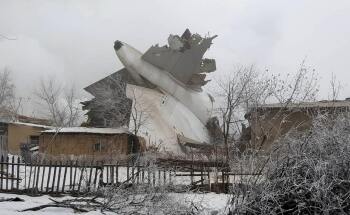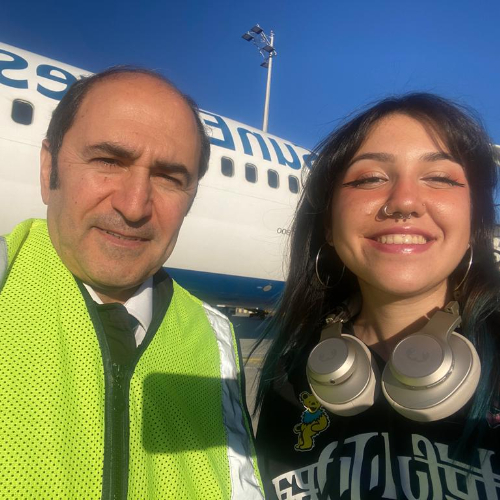Turkish Airlines Flight 6491 was a scheduled international cargo flight operated by ACT Airlines on behalf of Turkish Cargo. The aircraft departed from Hong Kong (HKG) to land in Istanbul, with a layover in Bishkek, Kyrgyzstan (FRU).
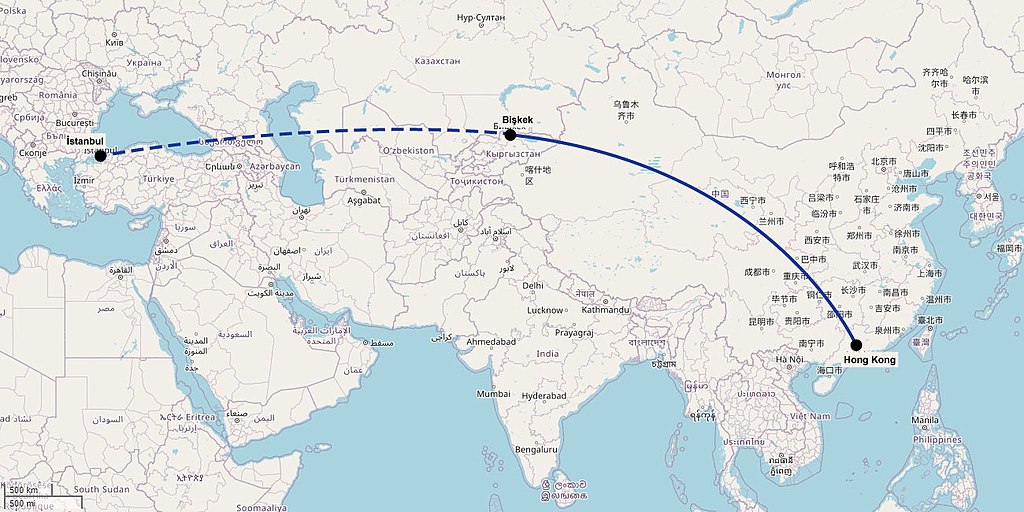
On January 16, 2017, while the sky of Bishkek was occupied by heavy fog, the Boeing 747-400F reached the end of runway 26 (900 meters past the runway) of Manas International Airport (FRU). It crashed into a village, Daça-Su settlement. The impact demolished more than two dozen buildings while resulting in the death of 39 people, including all 4 people on board the plane and 35 residents, with 17 of them being children. The village was approximately 2 kilometers (1.2 miles) west of the airport. Thirty-six residents suffered various severe injuries. According to official reports, the cargo plane carried 85,618 kilograms (188,755 pounds) of consumer goods in the compartment.
Following the accident, a day of national mourning was declared in Kyrgyzstan on January 17. The plane's purpose in having a layover at FRU was to refuel the aircraft and change the crew. The Interstate Aviation Committee (IAC), as a result of their research curated post-accident, revealed that the plane did not have any malfunction or that the air traffic controllers did not make a mistake. The outcome was catching the wrong glide path due to pilot error.
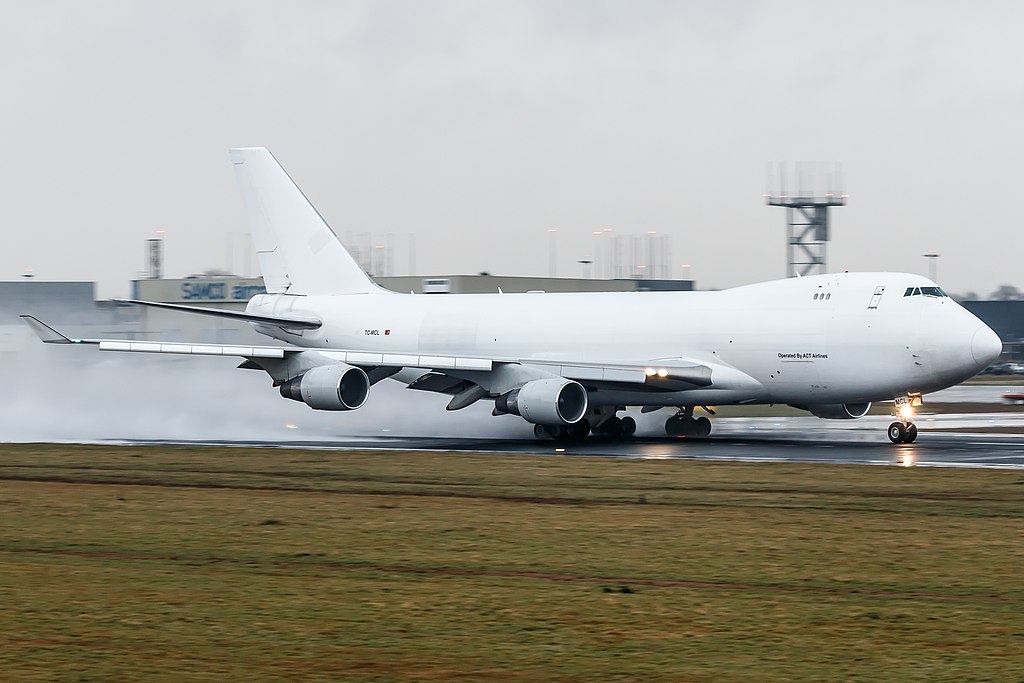
The Aircraft
The Boeing 747-412F ( manufacturer serial number 32897) was produced on January 13, 2003, with the tail number TC-MCL. The aircraft was operated by ACT Airlines, formerly MyCARGO Airlines, on behalf of Turkish Airlines. It was equipped with four Pratt & Whitney turbofan engines. At the time of the accident, it had 46,820 flight hours and 8,308 landings.
The first operation of the aircraft was carried out by Boeing on January 12, 2003, with tail number N5022E. It was then delivered to Singapore Airlines Cargo on February 27, 2003, and received the tail number 9V-SFL. On December 5, 2015, the aircraft was delivered to MyCargo Airlines. It started to operate for Qatar Airways Cargo on January 1, 2016, and for Turkish Airlines on January 11, 2017. The last type C maintenance check was accomplished on November 6, 2015.
On December 2, 2011, the aircraft had an accident after landing at Singapore Changi Airport (SIN). The plane landed on a grass field while returning from the runway to the taxiway. After the investigation, it was revealed that the aircraft did not slow down enough to take the turn, resulting in damage to its landing gear, parts of the braking systems, and the fan blades of engine number 3 because of the impact.
The Crew Members
Since it was not a commercial flight, many people were not onboard. The cargo flight had four crew members on the plane. Captain-pilot İbrahim Gürcan Dirancı, co-pilot Kazım Öndül, aircraft load agent Melih Aslan, and flight engineer İhsan Koca.
Captain İbrahin Gürcan Dirancı was 59 years old at the time of the accident. He completed his pilot training at the Air Force Academy on August 30, 1981. He had 10,808 flight hours, 820 being in the Boeing 747. Kazım Öndül was 59 years old as well. He also completed his training in the Air Force Academy on August 30, 1980. He had 5,894 flight hours, 1,758 being in the Boeing 747.

The Accident
On the night of January 15 and 16, 2017, the crew was operating the Boeing 747-412F TC-MCL flight 6491 from Hong Kong International Airport (HKG) to Atatürk Airport (ISL) with a layover in Manas Airport (FRU) to transport the needed cargo. Eighty-five thousand six hundred eighteen kilograms (188,755 pounds) of cargo were loaded onto the plane in Hong Kong. The report by Kyrgyz authorities and IAC stated that the layover at Manas Airport was aimed at aircraft refueling and crew change.
The cargo contents were not fully disclosed; however, IAC's report included consumer goods. The State National Security Committee mentioned household items and mobile phone accessories on the plane. After the accident, locals of the Daça-su settlement found electronic devices such as phones and kettles.
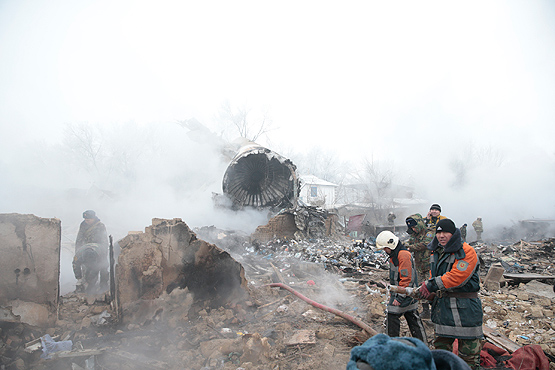
The crew members were provided 69 hours of rest at a hotel in Hong Kong between January 12 and 15, 2017. The departure happened at 7:12 p.m. local time on January 15, 2017, 2 hours and 2 minutes late from the estimated departure time. The aircraft systems were operating stably during takeoff, climb, and flight.
At 12:41 a.m. local time on January 16, 2017, the plane entered the control area of the Bishkek ATC Regional Control Center at 34,100 feet (10,394 meters) over the KAMUD reference point (according to the separation system established in China). At 12:51 a.m. local time, the crew requested permission to descend to 22,000 feet for landing. At 12:59 a.m., the Manas Airport provided the weather conditions to the crew:
"Runway visibility; 400 meters at runway threshold, 300 meters at runway midpoint and runway end, vertical visibility 130 ft."
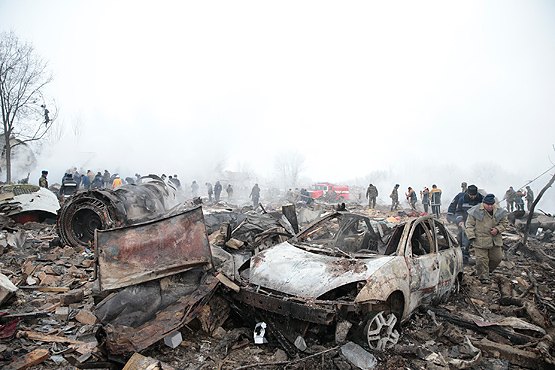
At 1:01 a.m. local time, the crew received the updated data: runway visibility 300 meters in the center of the runway, vertical visibility 150 feet. At 1:03 a.m. local time, the captain requested a descent, and the controller authorized the descent no lower than 18,000 feet (5,486 meters). At 1:10 a.m. local time, the controller reported the weather: "wind calm, visibility 50 meters, runway visibility 300 meters, freezing fog present, vertical visibility 160 ft," and they were asked if the crew would continue the approach. The crew reported that they would accomplish the approach.
The crew followed the standard approach chart and conducted an approach to runway 26. At 1:11 a.m., the controller notified the crew: "transition level is sub-zero and ILS is ready for approach to runway 26." The crew contacted the control tower, and the tower controller cleared runway 25 so the aircraft could land and report the weather forecast.
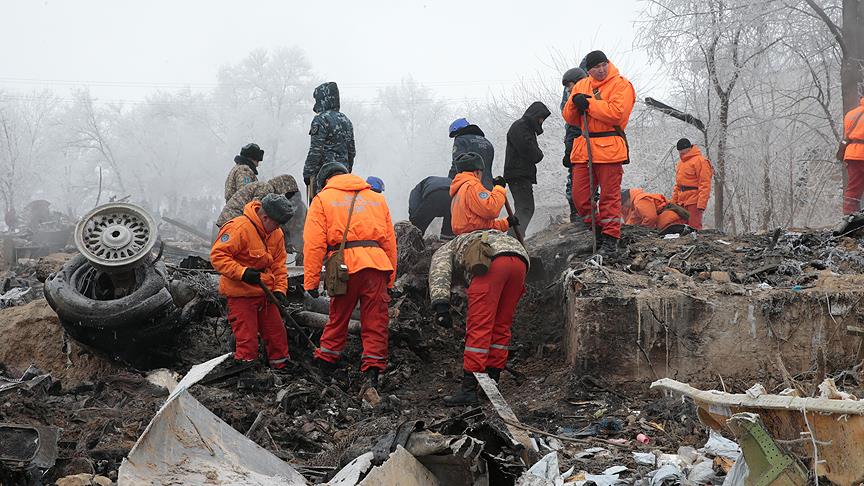
Right before the tragic event, the plane approached the threshold of runway 26 at a much higher altitude than the planned altitude. The aircraft flew the whole length of the runway and touched down around 900 meters from the far end of the runway. The plane moved 20 more meters before crashing into the outer concrete barrier of the airport and the buildings in the village of Daça-Su beyond the runway. The aircraft turned to the right with an angle greater than 90°.
The fuselage broke apart, and the cockpit separated. The aircraft's cockpit crashed into a brick house four hundred forty meters from where it first touched down. The general movement of the plane stopped approximately 60 meters away from the cockpit's separation. The tail and some parts of the aircraft were found around 470 meters from where the airplane first touched the ground.
The aircraft was completely demolished and destroyed, and a large number of planes were damaged by fire. At 1:12 a.m., the tower controller asked for the aircraft's position; however, they did not receive any answer from the crew.
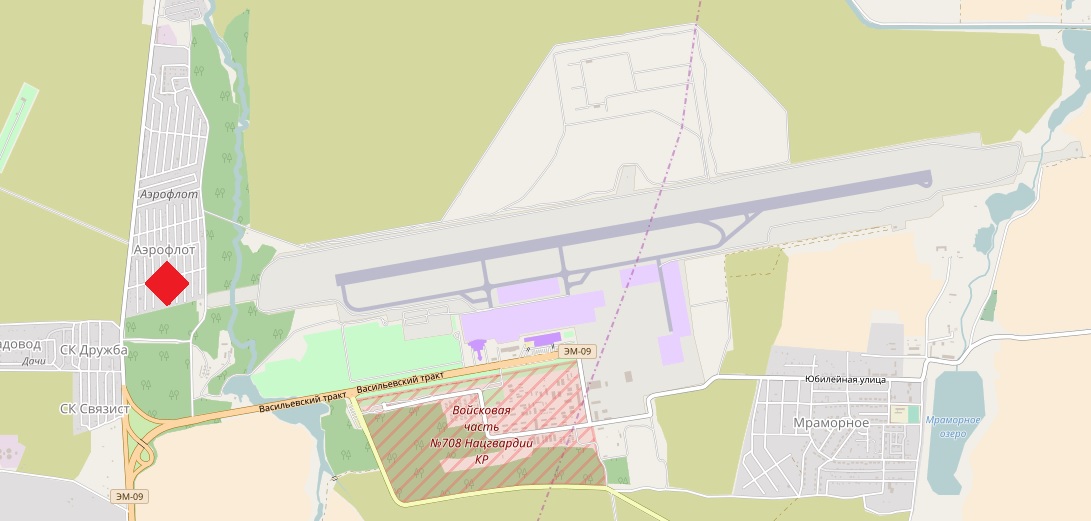
The Debris Area
In the area, there were damaged or destroyed houses and aircraft wreckage. A total of 19 houses were destroyed, and seven of them were injured at the accident site in Daça-Su village. There were 427 households in the settlement, and 1,434 people resided. The inspection carried out by investigators showed that no remains or traces of the aircraft were found on the runway surface.
It strengthened the fact that the plane landed 900 meters from the end of the runway. From the damage to the nearby objects, it could be noted that the aircraft was still descending slowly during the accident landing.
On the day of the accident, Kyrgyz press reported that ACT Airlines intended to compensate the victims for all material and intangible losses. In October 2017, they announced that all of the compensation was paid by ACT Airlines to all affected people and their relatives, which was 135 people in total. No report disclosed the amount of compensation.
Aftermath
Witnesses saw some emergency responders and locals capturing electronic devices from the plane's cargo hold. Some were arrested for looting the wreckage.
Deputy Prime Minister Muhammedkalıy Abılgaziyev at the time reported that more than 1,000 rescue workers were at the scene. Minister of Health Talantbek Batyraliyev also stated that 56 doctors and psychologists and 14 ambulance crews were sent to the scene by 11:46 a.m. local time.
The Commonwealth of Independent States, Turkish prime minister, Russian president, Iranian Foreign Minister, Belarusian president, US president, and Pope Francis expressed their condolences. January 17 declared a national mourning, and President Atambayev canceled his visit to China during that time and returned to Bishkek to be present during the accident's aftermath.
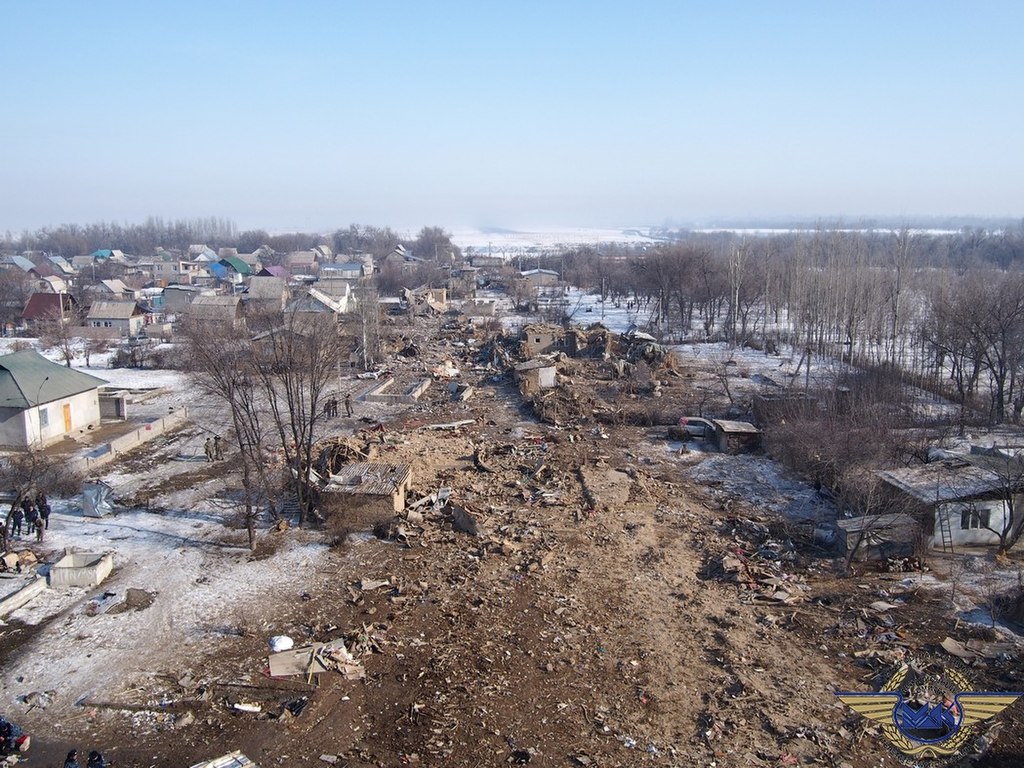
Many media outlets reported in their news that the accident was caused by Turkish Airlines. Turkish Airlines issued a press release stating that the plane and crew did not belong to them; it was solely ACT Airlines.
The flight was operated under the Turkish Airlines flight number. 37 injured people were brought to the health institutions after the accident. Only one resident did not survive in the hospital. He was 29 years old, and even though every intervention had been made, they became unsuccessful.
The Turkish Embassy in Kyrgyzstan received the bodies of the crew members from the Republican Forensic Medicine Expertise Center to identify and return them to Turkey. On January 24, 2017, a DNA examination expert from Turkey came to Cumhuriyet Forensic Medicine Expertise Center to designate the identity of the fourth crew member.
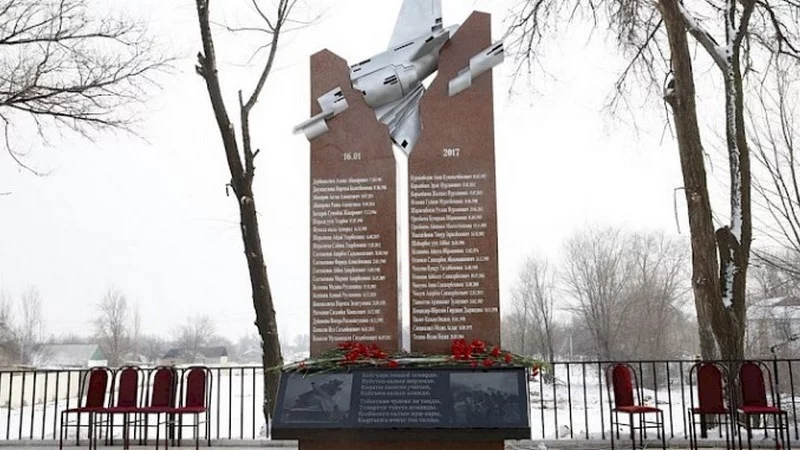
A year after the accident, a monument was revealed for public view with a ceremony in memory of the people who passed away during the accident. The memorial bears the names of the 39 people who died from the impact of the aircraft.
The Cause
In the final report published by IAC on March 4, 2020, the main cause was stated as the crew's lack of control over the aircraft's position relative to the aircraft's glide path during the descent with Instrument Landing System (ILS) at night and their failure take measure considering the time. Air Traffic Control Service (ATC) complied with established operational procedures.
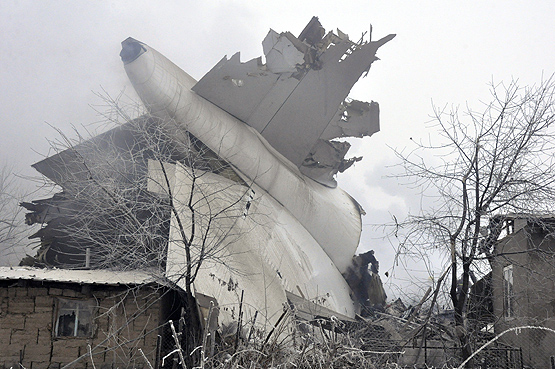
The factors that contributed to the accident are reported as:
- "Inadequate pre-flight briefing of the crew regarding approach charts for landing at Manas Airport,
- Although the crew was aware that the aircraft altitude was higher than required on the specified chart, the crew did not take effective measures to reduce the aircraft's altitude and reach the on-board approach chart reference point,
- Tower controllers' duty instructions do not include monitoring aircraft position deviations. The necessary technical equipment was available for this,
- Inability of crew members to eliminate excessive psycho-emotional stress resulting from complex approach conditions (night flight, CAT II landing, long-duration flight) and deviations from the glide line for a long period."
In conclusion, the accident was not a technical issue but rather a crew error that resulted in a tragic event.
Comments (2)
 Daniel
hi
Daniel
hi
 Daniel
hi 2
Daniel
hi 2
Add Your Comment
SHARE
TAGS
STORIES Turkish Airlines Incident Turkey Kyrgyzstan History Bishkek Boeing 747 Cargo Flight CargoRECENTLY PUBLISHED
 Learjet Owned By Vince Neil Crashes Into Gulfstream Jet, 1 Fatality Confirmed
On February 10th, around 14:30 local time, a Learjet private jet aircraft crashed into another private jet after landing at Scottsdale Airport (SCF) in Arizona.
NEWS
READ MORE »
Learjet Owned By Vince Neil Crashes Into Gulfstream Jet, 1 Fatality Confirmed
On February 10th, around 14:30 local time, a Learjet private jet aircraft crashed into another private jet after landing at Scottsdale Airport (SCF) in Arizona.
NEWS
READ MORE »
 Seattle Plane Strike 2025: Japan Airlines and Delta Collision Raises Safety Concerns
Seattle-Tacoma International Airport saw a concerning incident on Wednesday morning when a Japan Airlines (JAL) plane clipped a parked Delta Air Lines jet while taxiing. Thankfully, no one was injured, but passengers described the collision as a frightening experience.
NEWS
READ MORE »
Seattle Plane Strike 2025: Japan Airlines and Delta Collision Raises Safety Concerns
Seattle-Tacoma International Airport saw a concerning incident on Wednesday morning when a Japan Airlines (JAL) plane clipped a parked Delta Air Lines jet while taxiing. Thankfully, no one was injured, but passengers described the collision as a frightening experience.
NEWS
READ MORE »
 Ethiopian Airlines Expands Cargo Fleet with New Boeing 777 Freighter
Ethiopian Airlines has expanded its cargo fleet with a brand-new Boeing 777 Freighter, registered as ET-BAB (MSN 68140). The aircraft was delivered directly from Boeing’s factory in Everett, Washington, USA, and landed at Addis Ababa Bole International Airport at 3:41 PM (GMT+3) on Wednesday, January 22, 2025.
NEWS
READ MORE »
Ethiopian Airlines Expands Cargo Fleet with New Boeing 777 Freighter
Ethiopian Airlines has expanded its cargo fleet with a brand-new Boeing 777 Freighter, registered as ET-BAB (MSN 68140). The aircraft was delivered directly from Boeing’s factory in Everett, Washington, USA, and landed at Addis Ababa Bole International Airport at 3:41 PM (GMT+3) on Wednesday, January 22, 2025.
NEWS
READ MORE »



